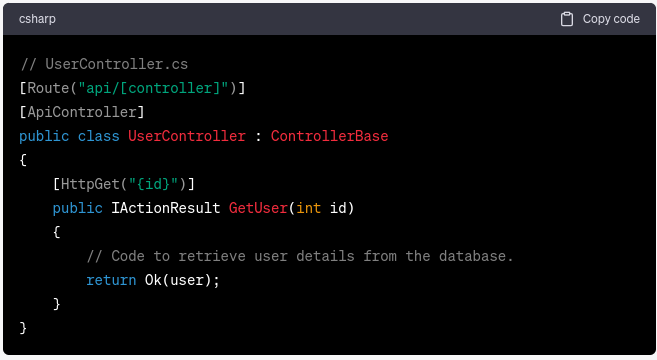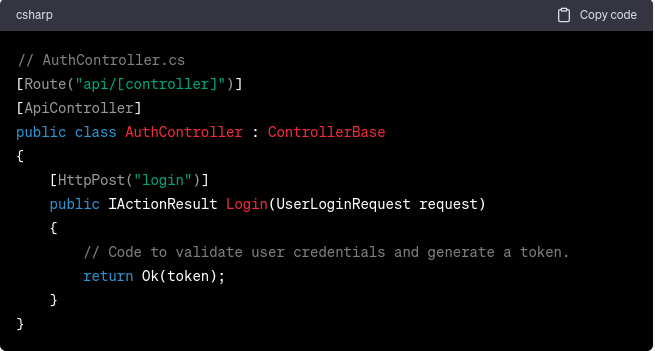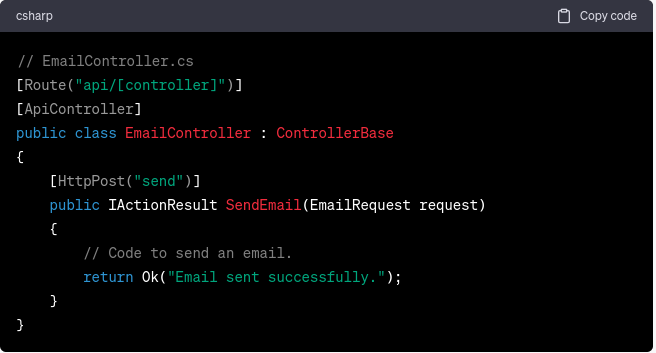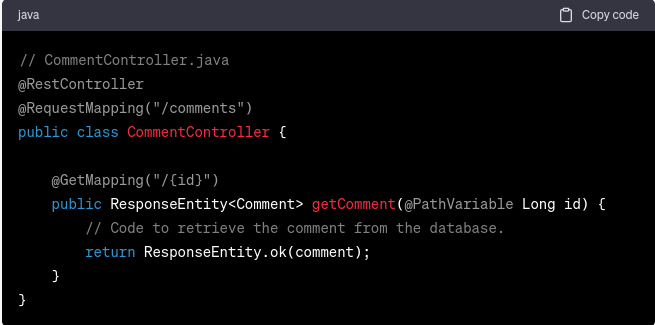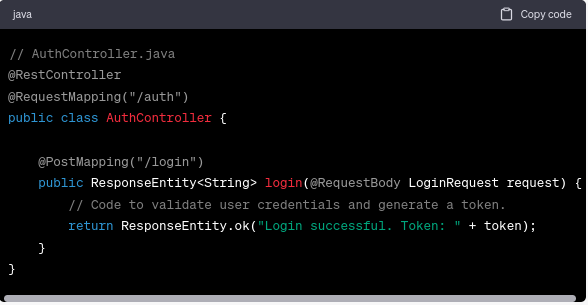For working professionals
For fresh graduates
- Study abroad
More
- Executive Doctor of Business Administration from SSBM
- Doctorate in Business Administration by Edgewood College
- Doctorate of Business Administration (DBA) from ESGCI, Paris
- Doctor of Business Administration From Golden Gate University
- Doctor of Business Administration from Rushford Business School, Switzerland
- Post Graduate Certificate in Data Science & AI (Executive)
- Gen AI Foundations Certificate Program from Microsoft
- Gen AI Mastery Certificate for Data Analysis
- Gen AI Mastery Certificate for Software Development
- Gen AI Mastery Certificate for Managerial Excellence
- Gen AI Mastery Certificate for Content Creation
- Post Graduate Certificate in Product Management from Duke CE
- Human Resource Analytics Course from IIM-K
- Directorship & Board Advisory Certification
- Gen AI Foundations Certificate Program from Microsoft
- CSM® Certification Training
- CSPO® Certification Training
- PMP® Certification Training
- SAFe® 6.0 Product Owner Product Manager (POPM) Certification
- Post Graduate Certificate in Product Management from Duke CE
- Professional Certificate Program in Cloud Computing and DevOps
- Python Programming Course
- Executive Post Graduate Programme in Software Dev. - Full Stack
- AWS Solutions Architect Training
- AWS Cloud Practitioner Essentials
- AWS Technical Essentials
- The U & AI GenAI Certificate Program from Microsoft
1. Introduction
6. PyTorch
9. AI Tutorial
10. Airflow Tutorial
11. Android Studio
12. Android Tutorial
13. Animation CSS
16. Apex Tutorial
17. App Tutorial
18. Appium Tutorial
21. Armstrong Number
22. ASP Full Form
23. AutoCAD Tutorial
27. Belady's Anomaly
30. Bipartite Graph
35. Button CSS
39. Cobol Tutorial
46. CSS Border
47. CSS Colors
48. CSS Flexbox
49. CSS Float
51. CSS Full Form
52. CSS Gradient
53. CSS Margin
54. CSS nth Child
55. CSS Syntax
56. CSS Tables
57. CSS Tricks
58. CSS Variables
61. Dart Tutorial
63. DCL
65. DES Algorithm
83. Dot Net Tutorial
86. ES6 Tutorial
91. Flutter Basics
92. Flutter Tutorial
95. Golang Tutorial
96. Graphql Tutorial
100. Hive Tutorial
103. Install Bootstrap
107. Install SASS
109. IPv 4 address
110. JCL Programming
111. JQ Tutorial
112. JSON Tutorial
113. JSP Tutorial
114. Junit Tutorial
115. Kadanes Algorithm
116. Kafka Tutorial
117. Knapsack Problem
118. Kth Smallest Element
119. Laravel Tutorial
122. Linear Gradient CSS
129. Memory Hierarchy
133. Mockito tutorial
134. Modem vs Router
135. Mulesoft Tutorial
136. Network Devices
138. Next JS Tutorial
139. Nginx Tutorial
141. Octal to Decimal
142. OLAP Operations
143. Opacity CSS
144. OSI Model
145. CSS Overflow
146. Padding in CSS
148. Perl scripting
149. Phases of Compiler
150. Placeholder CSS
153. Powershell Tutorial
158. Pyspark Tutorial
161. Quality of Service
162. R Language Tutorial
164. RabbitMQ Tutorial
165. Redis Tutorial
166. Redux in React
167. Regex Tutorial
170. Routing Protocols
171. Ruby On Rails
172. Ruby tutorial
173. Scala Tutorial
175. Shadow CSS
178. Snowflake Tutorial
179. Socket Programming
180. Solidity Tutorial
181. SonarQube in Java
182. Spark Tutorial
189. TCP 3 Way Handshake
190. TensorFlow Tutorial
191. Threaded Binary Tree
196. Types of Queue
197. TypeScript Tutorial
198. UDP Protocol
202. Verilog Tutorial
204. Void Pointer
205. Vue JS Tutorial
206. Weak Entity Set
207. What is Bandwidth?
208. What is Big Data
209. Checksum
211. What is Ethernet
214. What is ROM?
216. WPF Tutorial
217. Wireshark Tutorial
218. XML Tutorial
Microservices Tutorial
Introduction
This advanced Microservices tutorial will delve deeper into the world of microservices. This guide teaches readers to transform application development by breaking monolithic systems into smaller, independent, deployable services. This Microservices Tutorial will explore basic principles, implementation techniques, and examples using programming languages such as C#, Spring Boot, and Node.js.
Overview
Microservices have become increasingly popular in recent years because they offer many benefits, such as increased scalability, flexibility, and fault isolation. Instead of having one big single application, microservices encourage the creation of small, separate projects that communicate with each other through well-defined APIs. This architecture enables development teams to work independently, driving scalability, speeding development cycles, and maintaining with ease. Continue with this Microservices tutorial to learn about it in detail.
What are Microservices?
Microservices are a software development technique that breaks down an application into loosely coupled services that perform specific business functions. Each service operates in its own framework and communicates through subprotocols such as HTTP or messaging protocols. This way, the entire application doesn’t go down if one service fails. For example, consider an e-commerce application. In unitary architecture, all functions, such as user management, product inventory, and order processing, reside in a single codebase. In contrast, a microservice-based e-commerce application will have modules such as user, product, and order, each carrying out its designated function.
Principles of Microservices
Principle of Sole Responsibility
Microservices follow the Single Responsibility Principle (SRP), which means that each service should have a clearly defined and distinct purpose. Ensuring that projects are focused on their core functions makes them easier to understand, develop, and maintain.
Example: In our eCommerce application, the user service will only handle user registration and authentication, while the product service will maintain product descriptions and inventory
It is modeled around the industry
Microservices are designed around enterprises, aligning technical and real business needs. This approach facilitates communication between development and management teams, resulting in better collaboration and faster development.
Example: If our e-commerce application expands to providing digital services, we can introduce a new digital services microservice to handle the sale of digital products.
Isolated Failures
One of the most important benefits of microservices is their ability to eliminate failures. If one service experiences a problem, it will not drop the entire application, ensuring high availability and fault tolerance.
Example: When the order service experiences an outage due to high traffic, the user and product services operate independently. This allows users to browse the product and manage their accounts.
Infrastructure Automation
Microservices rely primarily on infrastructure automation for deployment, scaling, and monitoring. Pipelines for Continuous Integration/Continuous Deployment (CI/CD) streamline the development process, allowing for quicker releases and minimizing the need for manual intervention.
Example: Using CI/CD tools such as Jenkins or GitLab CI, for instance, you can orchestrate the deployment of each microservice to your preferred platform.
Independent Deployment
Each microservice can be independently deployed, enabling teams to release updates without affecting other services. This adaptability expedites innovation and decreases time-to-market.
Example: If a bug is resolved in the Product Service, the update can be rolled out without affecting the User or Order Services.
Microservices With C#
C# is a potent and flexible programming language that evolved through Microsoft. It is a great choice for building microservices. Its object-oriented nature marries well with the modular and encapsulated character of microservices. This enables each service to be designed as an independent module with its own personal objects. C# is a primary language within the.NET environment, presenting a rich set of libraries and frameworks that simplify microservices development. With current language features like async/await, C# allows builders to construct responsive and non-blocking microservices, handling concurrent requests effectively Additionally, its cross-platform guide and flexibility in communication protocols make it adaptable to diverse deployment scenarios. Integrated with the feature-rich Visual Studio IDE, C# streamlines the development method for constructing robust and scalable microservices. Overall, C# proves to be a developer-pleasant language that seamlessly aligns with the ideas of microservices structure.
This Microservices with C# tutorial examines how C# is used to implement microservices. Let’s develop a simple user administration system consisting of three microservices: User, Authentication, and Email.
Step 1: Set up a new C# solution with three projects - User, Authentication, and Email.
Step 2: Implement the User Service
Step 3: Implement the Authentication Service:
Step 4: Implement the Email Service:
In this example, each microservice focuses on its specific responsibility: User management, authentication, and sending emails. These services can be deployed and scaled independently, ensuring a highly scalable and modular application.
Microservices With Spring Boot
In this Microservices with Spring Boot tutorial, you will learn how this well-known and frequently used framework in the Java ecosystem, Spring Boot, is ideal for developing microservices. It makes development easier by taking an opinionated and convention-over-configuration approach. Spring Boot enables developers to quickly set up and configure microservices by handling boilerplate code, dependency management, and automatic setup. Its inbuilt web server enables autonomous deployment and scaling of microservices. Furthermore, Spring Boot interfaces well with other Spring projects, such as Spring Cloud, which provides critical features such as service discovery, load balancing, and distributed tracing. This makes it a good choice for developing resilient and highly scalable microservices architectures. Spring Boot’s large ecosystem and strong community support allow developers to focus on designing business logic rather than infrastructure complexity. These features make it a suitable framework for microservices development.
Let's create a microservices-based application for a simple blog platform. We'll have three microservices: Blog, Comment, and Auth.
Step 1: Set up a new Spring Boot project with three modules - Blog, Comment, and Auth.
Step 2: Implement the Blog Service
Step 3: Implement the Comment Service
Step 4: Implement the Auth Service
Here, we have three microservices, each responsible for handling blog-related requests, comments, and authentication. These are independently deployable, enabling faster development and deployment.
Microservices With Node.js
This Microservices with Node.js tutorial will explain how Node.js is a highly capable and efficient JavaScript runtime that is particularly suitable for constructing microservices. The system is designed with an event-driven, non-blocking I/O model, enabling it to effectively manage multiple requests simultaneously and achieve high scalability. The single-threaded, event-loop architecture of Node.js offers significant benefits for microservices. This architecture allows each service to function autonomously without causing any disruptions to the overall application. Furthermore, it is worth noting that Node.js boasts a wide-ranging ecosystem of modules and packages that can be accessed via npm. This extensive collection empowers developers to construct and expand microservices without significant obstacles. The non-blocking nature of the technology makes it well-suited for managing asynchronous tasks, such as handling multiple API calls or database operations concurrently. Node.js is a highly recommended option for developing microservices due to its strong performance, user-friendly nature, and wide range of community support.
Let's explore how to build microservices using Node.js. We'll create a simple online shopping application with three microservices: Product, Cart, and Order.
Step 1: Set up a new Node.js project with three modules - Product, Cart, and Order.
Step 2: Implement the Product Service
Step 3: Implement the Cart Service
Step 4: Implement the Order Service
Here, we have three microservices, each handling specific tasks related to products, user carts, and order placement. These can be independently scaled, ensuring a highly responsive and fault-tolerant application.
Key Differences Between Monolithic and Microservices Architecture
Monolithic Architecture | Microservices Architecture |
Single large software application with all functionalities seamlessly integrated | Composed of small, independent services that carry out unique enterprise functions |
Usually written in a single programming language and makes use of a single database | Each service may be written in a distinctive programming language and might have its individual database |
Scaling calls for scaling the complete software, even for particular functionalities | Scalability can be achieved for every service, resulting in optimal resource utilization |
An unmarried codebase, making it simpler to broaden and take a look at. | Independent codebases for each service, allowing separate development, testing, and deployment |
Changes or updates require redeploying the entire utility | Services may be up to date and deployed independently, reducing downtime and expediting releases |
Higher chance of application failure, as a worm in one module can impact the entire system | Isolated failure, when one service fails without affecting others, boosts overall system resilience |
It is difficult to modify for modern-day development practices like continuous delivery | Encourages the use of cutting-edge development approaches such as continuous delivery and DevOps |
In summary, monolithic architecture represents a tightly incorporated and centralized technique, while microservices architecture promotes a loosely coupled and decentralized method with individual services working collectively to create a larger application. Microservices offer benefits like scalability, resilience, and faster development cycles, making them a popular choice for contemporary application improvement.
What are the Pitfalls of Microservices?
Microservices architecture has several benefits; however, it is not devoid of drawbacks. Knowing these disadvantages helps you choose this architecture:
1. Complexity: Distributed microservices are harder to manage than monolithic architectures. Inter-service communication, service discovery, and load balancing complicate infrastructure and design.
2. Distributed System Issues: Distributed systems complicate microservices. Latency, network outages, and consistency concerns can complicate application development and troubleshooting.
3. Data management: Multiple service data consistency and transactions are tough. Data integrity needs careful planning, distributed transactions, or eventual consistency models.
4. Operational overhead: Overheads increase with several services. Each requires resource-intensive maintenance and monitoring by teams.
5. Dependencies: Shared data models or APIs can tightly couple microservices. Versioning issues arise when one service requires upgrades in dependent services.
6. Performance Overhead: Network connectivity between microservices might slow down method calls in a monolithic architecture.
7. Testing complexity: Testing microservices means checking each service individually and then the interactions between them. This requires thorough examination techniques.
8. Service Discovery and Load Balancing: Service discovery and load balancing can complicate infrastructure and introduce failure points.
9. Resource Usage: Running many services uses more resources than a monolithic program, which may increase hosting expenses.
10. Team Organization: Microservices may require specialized teams for each service, causing communication and collaboration issues.
Despite these drawbacks, many organizations choose microservices for scalability, fault isolation, and autonomous deployment, especially in big, complicated projects. Planning, architectural design, and continuous monitoring can alleviate these issues and ensure the success of microservices.
Conclusion:
The adoption of microservices architecture has significantly transformed the way contemporary applications are developed. It offers remarkable scalability and resilience, leading to improved performance and reliability. The construction of robust and efficient microservices-based applications can be achieved by following key principles such as single responsibility, domain modeling, failure isolation, infrastructure automation, and independent deployment.
The adoption of a microservices architecture has the potential to fully leverage the capabilities of your application and accelerate the advancement of your development processes. After completing this tutorial, you are now equipped to begin your practical exploration of microservices.
FAQs:
1. How do microservices communicate with each other?
Microservices establish communication through lightweight protocols such as HTTP/REST or messaging systems like RabbitMQ or Kafka. This facilitates smooth integration among the services.
2. How do microservices manage authentication and security?
Microservices necessitate careful security considerations. Common practices include implementing a centralized authentication mechanism with OAuth or JWT and securing inter-service communication with SSL/TLS.
3. How do microservices guarantee data integrity in a distributed environment?
Data consistency in microservices can be difficult to achieve. To manage distributed transactions and preserve data integrity, developers frequently employ techniques such as the Saga pattern, two-phase commits, or event sourcing.

Author|900 articles published


upGrad Learner Support
Talk to our experts. We are available 7 days a week, 9 AM to 12 AM (midnight)
Indian Nationals
1800 210 2020
Foreign Nationals
+918068792934
Disclaimer
1.The above statistics depend on various factors and individual results may vary. Past performance is no guarantee of future results.
2.The student assumes full responsibility for all expenses associated with visas, travel, & related costs. upGrad does not provide any a.

